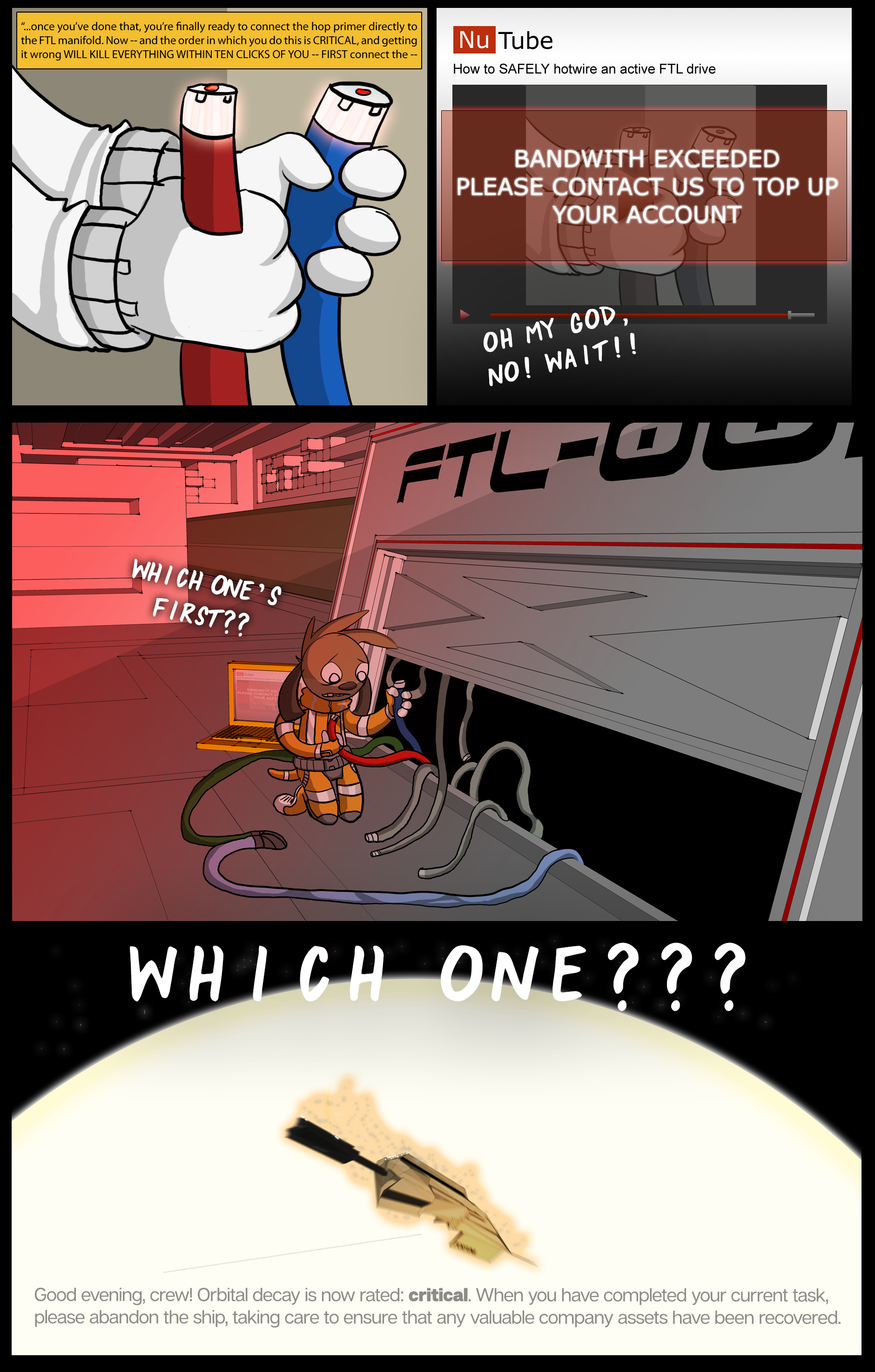There’s no better way to learn than on the job. Make sure you’ve bought enough data to download the tutorial videos, though.
Though this scene does raise two good questions: 1) whatever happened to the Internet? and 2) how can such a system possibly work in deep space, where starships routinely punch through spacetime to distances which would take any recognisable data signal many thousands of years to travel?
To address question 1: well, it’s still around… sort of. On Earth, for instance, it’s now pretty much one big shopping channel. It’s much more set to “receive” than “send”: individuals on the main networks don’t tend to put things out there; the Internet is the voice of companies. The closest most individuals will get to putting original content on the Internet is using their social media profiles (usually the ones provided by their employers)–but even then, they are limited to sharing and adding emotes to content that has been posted by the corporate accounts. They can’t put anything original there themselves (not even comments–thankfully). And, of course, ISPs pretty much run their own walled versions of the Internet, without much crosstalk between them (you can pay, but most people can’t really afford the out-of-plan charges of accessing content provided by another network).
Out in deep space, the Internet is even more limited. You’re stuck with whatever is on the nodes within line of sight and within range. If that’s a network that your ISP includes in its plan, then great. If it’s not, you either can’t access it at all, or you can only access the previews designed to sell you access at a considerable cost.
Which brings us to question 2. The basic problem of superluminal signal transmission being fundamentally impossible has been tackled by using wormholes. Erect a communications system around a tiny wormhole, and you can pass signals from one point in the galaxy to another instantly. You can then set up a more conventional line-of-sight network to relay the signal to starships, planets, and other recipients.
Early such wormholes were discovered–wormhole prospecting was once a huge industry for this reason, and a lot of the earlier colonial systems were set up around these natural nodes, and their ease of communcation made them highly desirable locations to settle businesses relying on fast and consistent communication. Somewhere along the line, though, someone figured out how to punch the holes artificially–which was bad news for those early colonies, as their USP suddenly became a whole lot less U.
Anyway, Thom was extraordinarily lucky to be near a network node that could serve up a video about hotwiring FTL drives (a mirror of content stolen from a now-defunct independent network for user-generated video)–but it wasn’t cheap.
